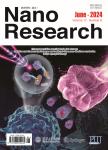Charge Transport in Disordered Graphene-Based Low Dimensional Materials
基于无色石墨烯的低维材料中的电荷传输作者机构:CEALETIMINATECF38054 GrenobleFrance CEAInstitute for Nanoscience and CryogenicsINAC/SPSMS/GT17 rue des Martyrs38054 Grenoble Cedex 9France Theory of Condensed Matter GroupCavendish LaboratoryUniversity of CambridgeTrinity LaneCambridge CB217NUK Institute for Materials ScienceTU DresdenD-01062 DresdenGermany Department of Condensed Matter PhysicsFaculty of Mathematics and PhysicsCharles UniversityKe Karlovu 512116 Prague 2Czech Republic
出 版 物:《Nano Research》 (纳米研究(英文版))
年 卷 期:2008年第1卷第5期
页 面:361-394页
核心收录:
学科分类:08[工学] 0805[工学-材料科学与工程(可授工学、理学学位)] 080502[工学-材料学]
基 金:This work was partially supported by the ANR/PNANO project ACCENT,by the FP7/ICT/FET GRAND project by the“Graphene Project”of CARNOT Institute-Leti by the European Union project“Carbon Nanotube Devices at the Quantum Limit”(CARDEQ)under contract No.IST-021285 by the Volkswagen Stiftung under Grant No.I/78340 by the DFG Priority Program“Quantum Transport at the Molecular Scale”SPP1243 and by DAAD
主 题:Graphene charge transport carbon nanotubes
摘 要:Two-dimensional graphene,carbon nanotubes,and graphene nanoribbons represent a novel class of low dimensional materials that could serve as building blocks for future carbon-based *** these systems share a similar underlying electronic structure,whose exact details depend on confi nement effects,crucial differences emerge when disorder comes into *** this review,we consider the transport properties of these materials,with particular emphasis on the case of graphene *** summarizing the electronic and transport properties of defect-free systems,we focus on the effects of a model disorder potential(Anderson-type),and illustrate how transport properties are sensitive to the underlying *** provide analytical expressions for the elastic mean free path of carbon nanotubes and graphene nanoribbons,and discuss the onset of weak and strong localization regimes,which are genuinely dependent on the transport *** also consider the effects of edge disorder and roughness for graphene nanoribbons in relation to their armchair or zigzag orientation.



